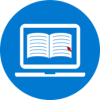Objectives
On completion of this unit, you will be able to:
- define key concepts pertaining to filtering literacy
- explain how to reduce information overload and develop strategies for filtering information
- select resources for the classroom and design filtering literacy tasks for your students
Definition
Dudeney, Hockly and Pegrum (2014: 25) define filtering literacy as “an inflection of network literacy, this is the ability to reduce information overload by using online social and professional networks as screening mechanisms”.
So what is Filtering Literacy?
A common adage, known as the Sturgeon’s law, or Sturgeon’s revelation, portrays that “ninety percent of everything is rubbish” and this, which might seem like a simplistic and concise view at first, matters to anyone who’s seeking, gathering or simply receiving information.
Learning how to filter the information is essential for any language learner. Technological and/or editorial strategies can be taught and adopted (see RSS and news feed below). Filtering literacy can be implemented with simple strategies, starting with setting up web feeds, creating filters on one’s email inbox, or identifying appropriate journalistic sources. Additionally, filtering literacy is closely linked to network literacy in the sense that students will have to learn how to build up their own trusted social and professional network (see PLNs below) to screen the vast amounts of information available.
Crap Detection 101, Howard Rheingold
About filtering literacy
RSS and news feed
A Rich Site Summary (RSS), often called Really Simple Syndication, is a format of web feed (or news feed). News feeds allow you to see when websites have added new content. You can get the latest headlines and video in one place, as soon as it is published, without having to visit the websites you have taken the feed from. The RSS feed is a regularly updated summary of web content, along with links to full versions of that content. When you subscribe to a given website’s feed by using a RSS feed reader, you receive a summary of new content from that website. Google News RSS Feeds is an easy tool to set up but news feed are available for most social or journalistic websites.
PLNs
Personal Learning Networks, or PLNs, consist of both living resources (experts, colleagues, peers) and material resources (websites, documents, artefacts, tools). A PLN can be built on any platform (such as Twitter, Facebook, or WordPress) as long as it provides the language learner with the capability of connecting with people and linking to resources. A class blog or social network is an excellent way to build a PLN for students, but ‘because these platforms will become lifelong informational filters, it is important that they are broad and diverse enough to ensure students don’t become trapped in narrow echo chambers’, Dudeney, Hockly and Pegrum (2014: 25).
Trusted environments such as PLNs can also serve as information filters, learning spaces and platforms for collaboration and dissemination.
Some useful links
- Using Google News RSS Feeds
- Facebook – How News Feed Works
- News feeds from the BBC
- Creating and Nurturing your Personal Learning Network #PLN, Radford University presentation
Activities for the classroom
Intercultural Communication: Comparing cultures and discovering if we are intercultural speakers
Information Literacy: Let’s search
Related activities
| Context of use | ID | Title | Related themes | Languages |
|---|---|---|---|---|
| CPD materials | ||||
| DL-I-F-001-C | Filtering literacy, what is it? | EN FR GE IT | ||
| Activities for the classroom | ||||
| DL-I-F-003-A | Are you digitally distracted? | EN FR | ||
| Independent learning | ||||
| DL-I-F-002-S | Filtering literacy, what is it? | EN FR | ||
What’s next?
Source/attribution: Digilanguages. Author: Alexandre Jacquot
Additional Content
Additional tips for teachers
Liens utiles
- RSS – Syndication de contenu, Comment Ca Marche
- Construire son réseau personnel d’apprentissage, Thot Cursus$
- Réseau Personnel d’Apprentissage ? (PLN), E-Pedagogie, web2.0
Nützliche Websites:
- Das deutsche RSS-Verzeichnis
- Ein interessanter Blogbeitrag auf Shift
Per aggiungere altre voci e materiale in italiano
Da leggere:
- Un breve post su Punto informatico che riprende una raccomandazione di Umberto Eco sull’importanza di filtrare le informazioni che troviamo online. La discussione nei commenti può essere interessante
- Il blog di Serena Turri riprende la posizione di Umberto Eco in questo post
- Un post di StartUpItalia sui diversi modi che gli insegnanti possono utilizzare per creare una propria rete di apprendimento

